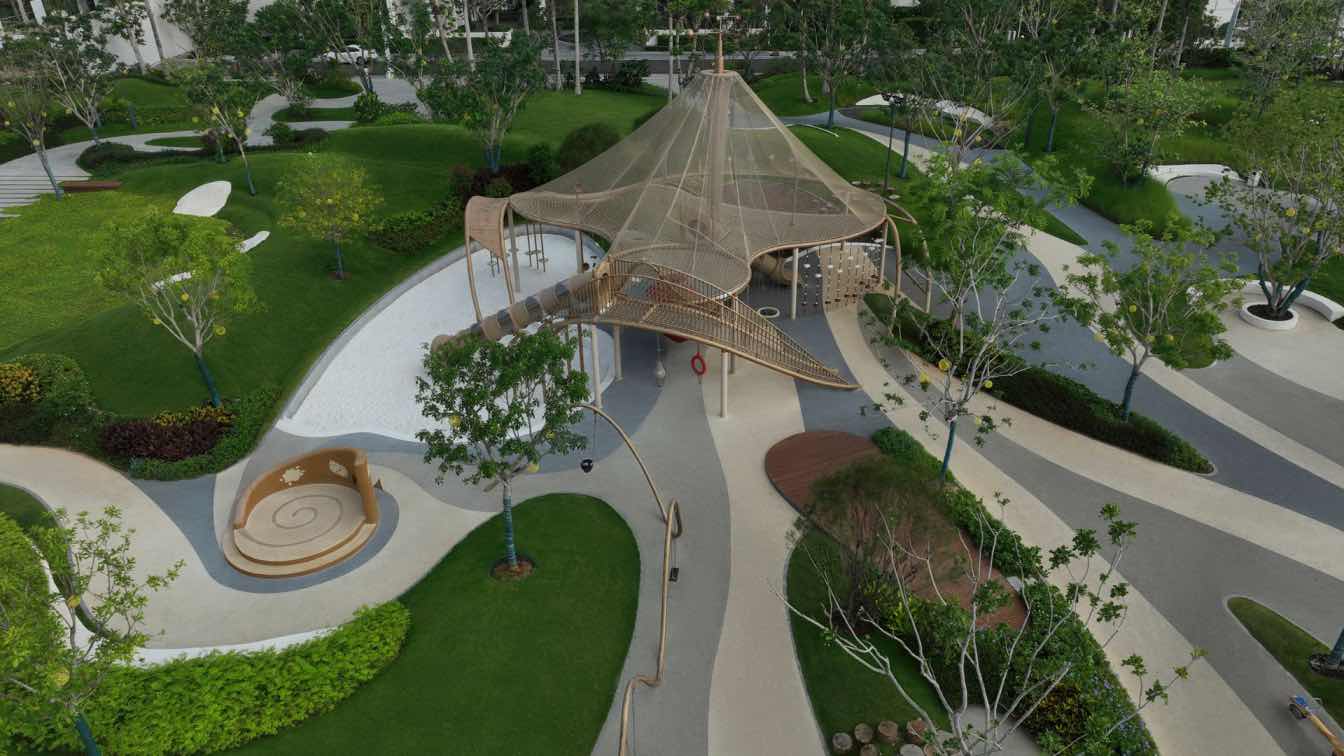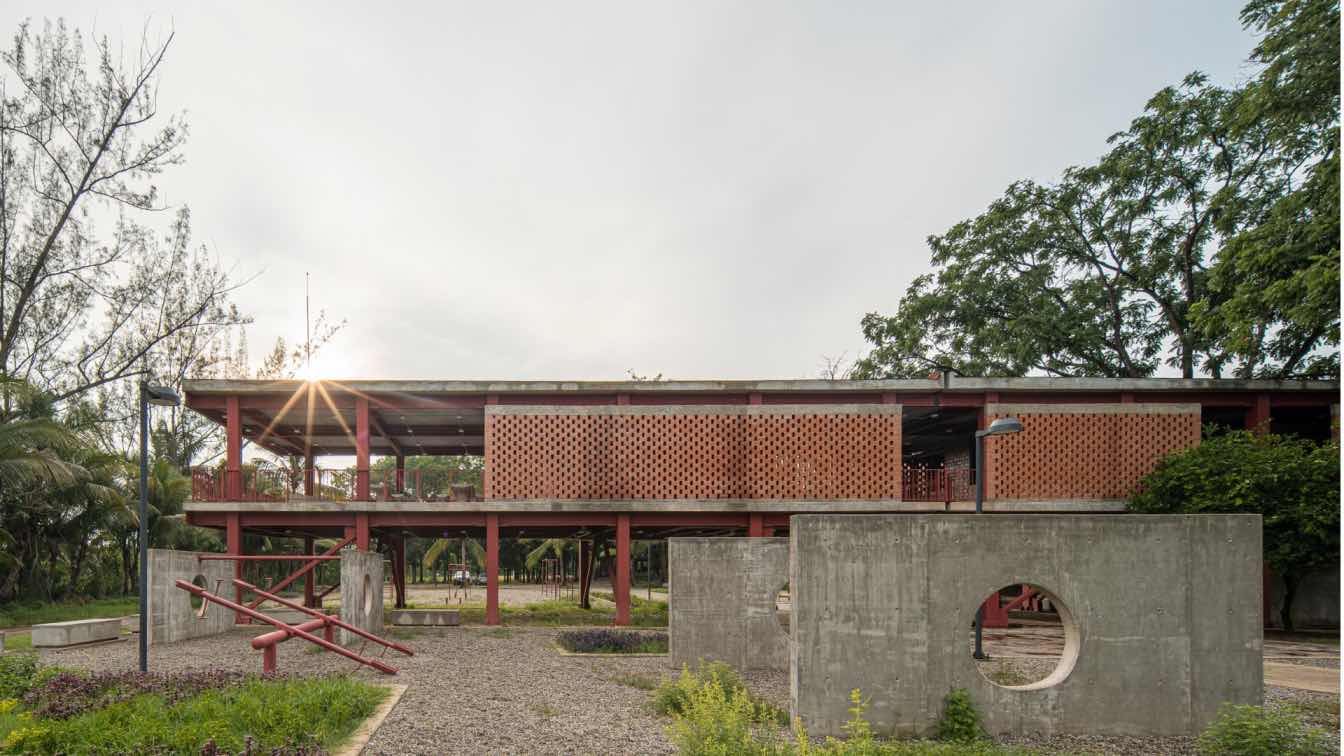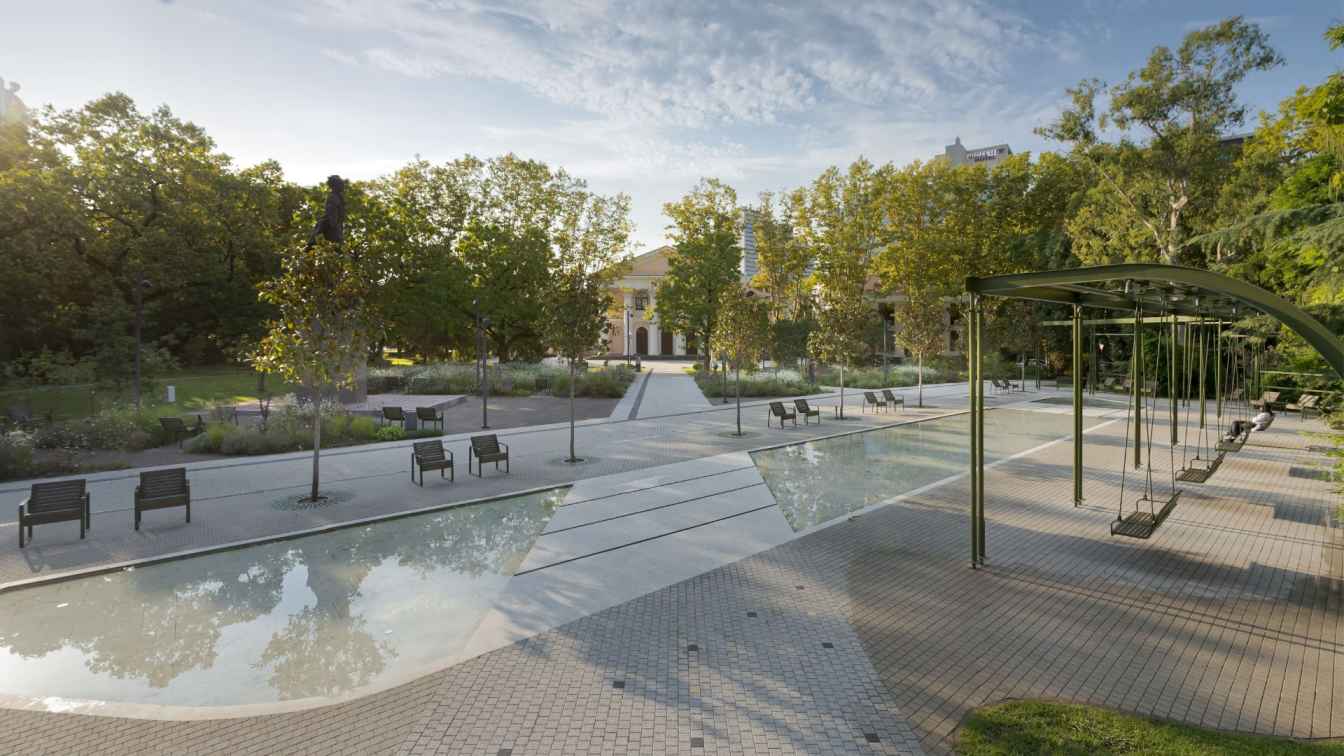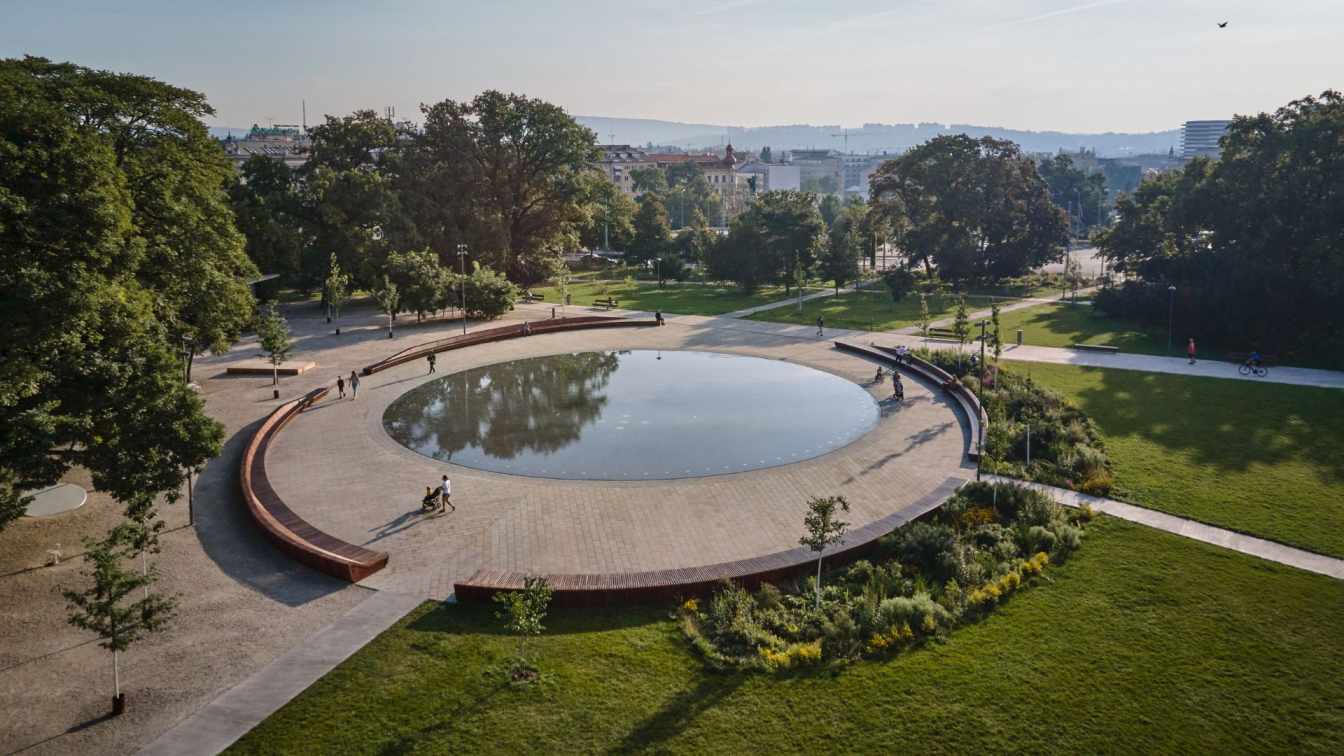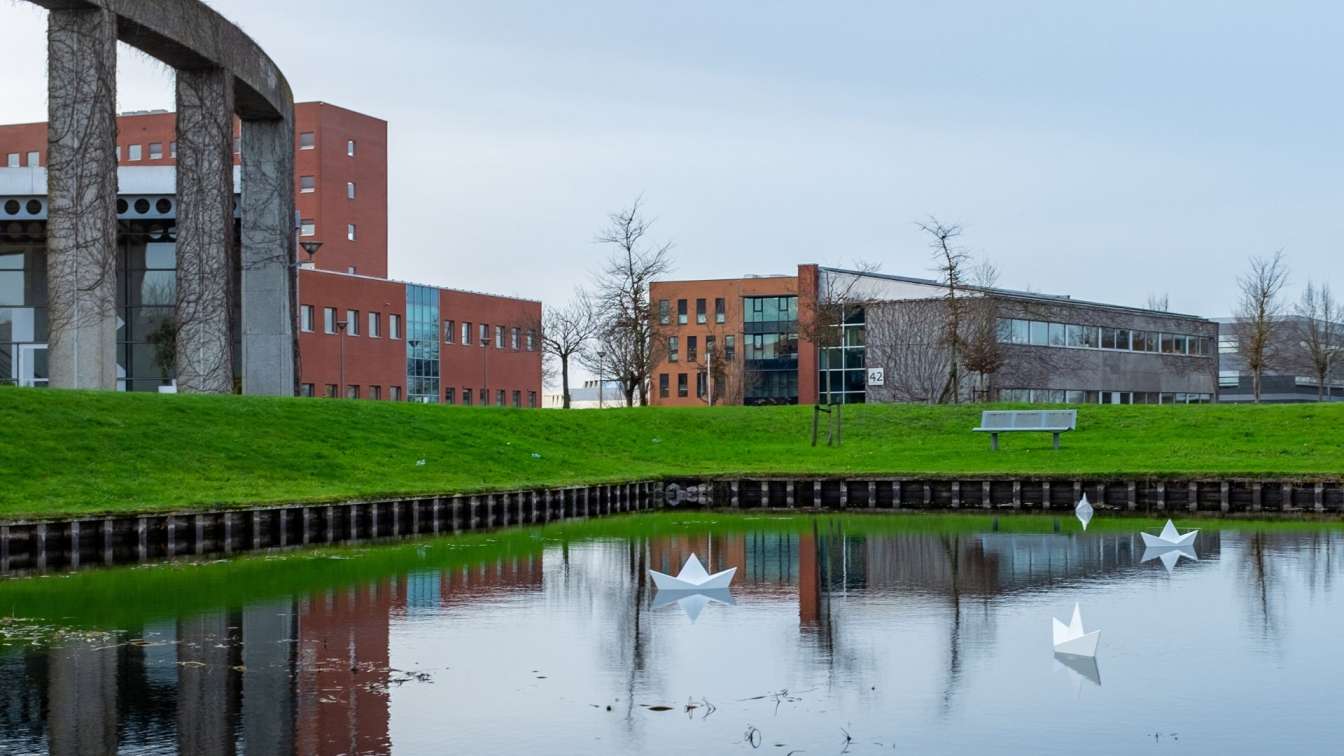Chengdu MaiWei Landscape Architecture Studio: Located in Yazhou District of Sanya, Hainan Province, the site is adjacent to the coastline of Yazhou Bay and connects to the central park of Sanya Deep Sea Science and Technology City. The 1.2-hectare project aims to create a child-friendly urban park that merges ecological preservation with everyday functionality, becoming a key node in the region’s coastal green infrastructure.
The design preserves the site’s natural character, including wetland vegetation, wild-growing grasses, and ecological shorelines. With the concept of “fluid boundary with nature,” the project integrates free-form landforms and curved circulation to dissolve spatial edges and foster immersive experiences within the park.
The landscape strategy focuses on three aspects: ecology, age inclusivity, and artistic expression. Green infrastructure is implemented through wetland restoration, rainwater infiltration systems, and native planting. Permeable paving and undulating topography reduce hardscape coverage and enhance user comfort. Main paths and rest areas are set at appropriate elevations to remain usable during high tide periods, introducing flexibility in both spatial and ecological performance.
Spatially, the park is divided into several experience zones tailored to different age groups. Drawing inspiration from islands and tidal movements, sculpted terrain forms distinct mounds and playful landforms that subtly shape the user journey. Boundaries between functions are softened through topographic transitions, allowing views, rhythms, and moods to shift as visitors move across the site. The result is a dynamic yet grounded public space that encourages interaction between community life and natural systems.




































